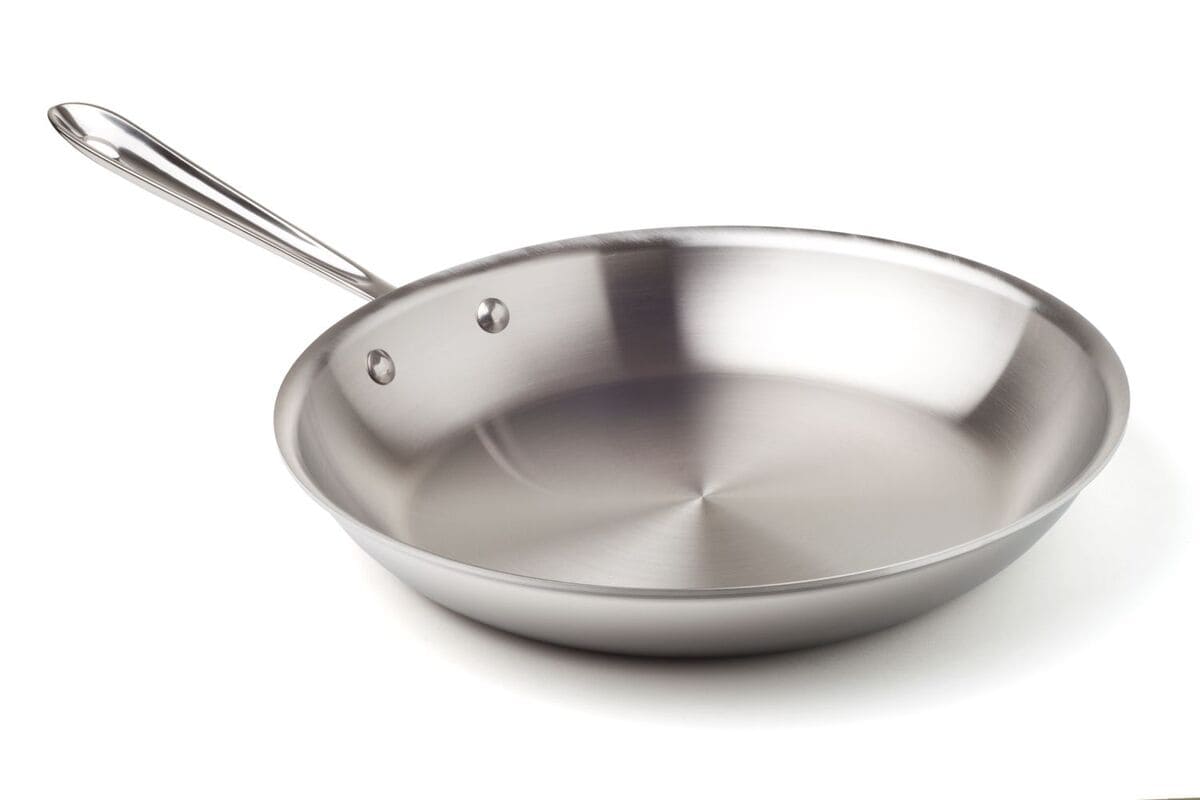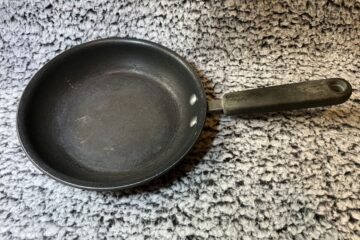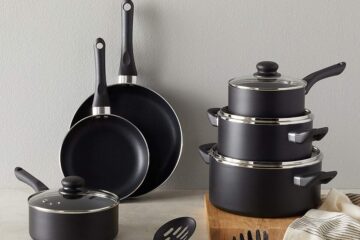Hard-anodized cookware has become increasingly popular in recent years due to its durability and non-stick properties. But what exactly is hard-anodized cookware, and how is it different from other types of cookware?
In simple terms, hard-anodized cookware is made from aluminum that has undergone an electrolytic process to create an oxidized exterior layer. This layer makes the aluminum more durable and creates a non-porous protective surface that is resistant to scratches and other types of damage. The result is cookware that is more long-lasting than traditional cookware and is virtually non-porous, making it easy to clean and maintain.
While hard-anodized cookware is often compared to non-stick cookware, there are some key differences between the two. Non-stick cookware typically has a coating applied to the surface to prevent food from sticking, while hard-anodized cookware is naturally non-stick due to its oxidized exterior layer. Additionally, hard-anodized cookware is generally more durable than non-stick cookware and can withstand higher temperatures without becoming damaged.
What is Hard Anodized Cookware?
Hard anodized cookware is a type of cookware that has undergone an electrochemical process to make it more durable and resistant to scratches, corrosion, and wear. The process involves immersing the aluminum in a chemical bath and exposing it to an electrical current, which creates a hard, non-porous surface that is easy to clean and maintain.
Anodizing Process
The anodizing process creates a layer of aluminum oxide on the surface of the cookware, which is much harder than the original aluminum. This layer is also non-reactive, which means that it won’t react with acidic or alkaline foods, preserving the flavor and quality of the food being cooked.
Benefits of Hard Anodized Cookware
One of the main benefits of hard anodized cookware is its durability. The hard surface is scratch-resistant, making it ideal for use with metal utensils and for cooking food at high temperatures. It is also non-stick, which means that food won’t stick to the surface, making it easy to clean and maintain. Additionally, hard anodized cookware is lightweight, making it easy to handle and store.
Disadvantages of Hard Anodized Cookware
Although hard anodized cookware is durable and non-stick, it does have some disadvantages. For example, it is not suitable for induction cooktops, as it is not magnetic. Additionally, it can be more expensive than other types of cookware, although it is often considered a worthwhile investment due to its longevity and durability.
How to Choose Hard Anodized Cookware?
When choosing hard anodized cookware, there are several factors to consider, including durability, non-stick coating, heat conductivity, and price.
Durability
One of the main benefits of hard anodized cookware is its durability. The anodized coating makes the cookware resistant to scratches, dings, and other types of damage. Additionally, hard anodized cookware is typically dishwasher safe and can withstand high temperatures without warping.
Non-Stick Coating
Many hard anodized cookware sets come with a non-stick coating, which makes cooking and cleaning easier. However, it is important to note that not all non-stick coatings are created equal. Some may contain harmful chemicals, such as PFOA and PTFE, which can be released into the air when heated. When choosing non-stick cookware, look for sets that are labeled PFOA and PTFE-free.
Heat Conductivity
Hard anodized cookware is known for its excellent heat conductivity, which means that it heats up quickly and evenly. This makes it ideal for cooking a variety of dishes, from stir-fries to soups. However, it is important to note that hard anodized cookware is not compatible with induction cooktops.
Price
Hard anodized cookware can be more expensive than other types of cookware, such as stainless steel or cast iron. However, it is important to consider the long-term value of the investment. Hard anodized cookware is durable and long-lasting, which means that it may be a better value in the long run.
How to Clean and Maintain Hard Anodized Cookware?
Hard anodized cookware is known for its durability and resistance to scratches, making it a popular choice for many home cooks. However, like any other cookware, it requires regular cleaning and maintenance to keep it in good condition. Here are some tips on how to clean and maintain your hard anodized cookware.
Cleaning Tips
When it comes to cleaning hard anodized cookware, it’s important to avoid using abrasive cleaners or scrubbers that can scratch the surface. Instead, use mild dish soap and warm water to clean your cookware. Here are some more specific cleaning tips:
- Clean your cookware as soon as possible after use to prevent food from sticking to the surface.
- Use a soft sponge or cloth to clean your cookware. Avoid using steel wool or other abrasive scrubbers.
- If your cookware has stubborn stains or burnt-on food, you can use a baking soda paste or a commercial cleaner designed for hard anodized cookware.
- Never use bleach or other harsh chemicals on your cookware, as they can damage the surface.
Maintenance Tips
In addition to regular cleaning, there are a few things you can do to maintain your hard anodized cookware and extend its lifespan. Here are some tips:
- Avoid using metal utensils on your cookware, as they can scratch the surface. Instead, use silicone, wood, or nylon utensils.
- Don’t stack your cookware, as this can cause scratches and other damage. Instead, store your cookware separately.
- If your cookware has a nonstick coating, avoid using cooking sprays or oils, as these can damage the coating over time.
- Always follow the manufacturer’s instructions for care and use of your cookware.
Conclusion
Hard-anodized cookware is an excellent investment for anyone who wants to upgrade their kitchen. It is durable, versatile, and easy to maintain. It also conducts heat better than many other options, making it perfect for cooking a variety of dishes.
While hard-anodized cookware has a few downsides, such as its short lifespan and incompatibility with induction cooktops, these are outweighed by its many benefits. Overall, hard-anodized cookware is an excellent choice for anyone who wants to cook with high-quality, long-lasting cookware.
When choosing hard-anodized cookware, it is important to consider the type of cooking you will be doing and the size of your kitchen. There are many different types of hard-anodized cookware available, from individual pieces to full sets. It is also important to choose cookware that is compatible with your stove and oven.
In summary, hard-anodized cookware is a great investment for anyone who wants to cook with high-quality, durable cookware. It is versatile, easy to maintain, and conducts heat better than many other options. While it may have a few downsides, these are outweighed by its many benefits.



